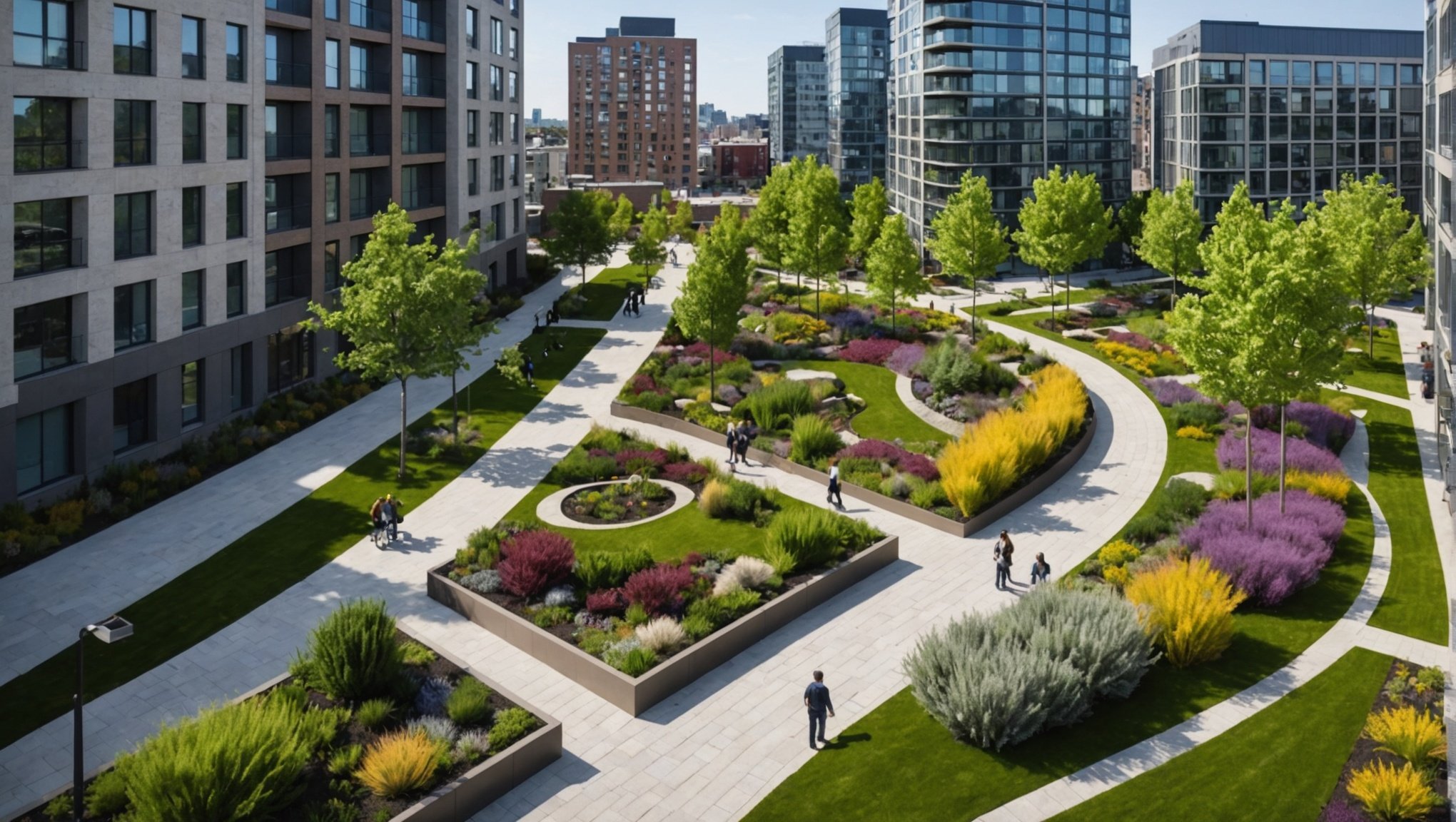The Importance of Urban Biodiversity
Urban biodiversity refers to the variety of living organisms found within urban areas, encompassing a diverse range of plants, animals, and microorganisms. This biodiversity is essential for maintaining healthy ecosystem services within city environments. By enhancing urban biodiversity, cities can substantially improve their environmental sustainability.
Firstly, urban biodiversity plays a crucial role in improving air quality. Vegetation within cities acts as a natural filter, removing pollutants and producing oxygen. Trees and plants can absorb CO2, a major greenhouse gas, contributing to healthier air and combatting climate change. Secondly, diverse plant life helps mitigate the urban heat island effect. Cities often experience higher temperatures than surrounding areas due to human activities and concrete proliferation. Increasing green spaces such as parks and green roofs can significantly lower temperatures, offering both ecological and human benefits.
Also to read : Unlocking Efficiency: How Blockchain Technology Can Revolutionize Real Estate Sales Processes
Additionally, urban biodiversity enhances human well-being. Access to natural environments has been linked to improved mental health, reduced stress, and increased physical activity. Finally, promoting biodiversity fosters resilience against climate change. Diverse ecosystems are typically more robust and adaptable to environmental changes, aiding cities in weathering climate-related events. Incorporating biodiversity into urban planning is vital for creating livable, sustainable cities.
Creative Landscape Designs That Enhance Biodiversity
In the world of landscape architecture, embracing elements like eco-friendly design and green infrastructure can significantly boost biodiversity while making urban areas visually appealing and ecologically rich.
Topic to read : Navigating the Legal Landscape: How to Transform Agricultural Land into Residential Property in the UK
Native Plant Integration
Integrating native plants into urban landscape architecture provides numerous benefits. These plants adapt well to local climates, requiring less water and maintenance. They also attract local fauna, supporting species that have adapted to these plants over centuries. For instance, cities like Toronto have included native plants in their parks, fostering a balanced ecosystem and reducing the need for pesticides and artificial fertilizers. Recent urban developments show that implementing eco-friendly design is not only sustainable but also economically viable.
Green Roofs and Vertical Gardens
Green roofs and vertical gardens are excellent examples of green infrastructure that enhance biodiversity in cities with limited space. A green roof on an office building can mitigate urban heat, filter air pollution, and provide habitats for birds and insects. Stockholm’s modern vertical gardens demonstrate effective use of limited space by supporting plant growth while enhancing city aesthetics.
Wildlife Corridors and Eco-Parks
Designing wildlife corridors and eco-parks allows safe movement and habitation for urban wildlife. Cities like Singapore have pioneered eco-parks that promote biodiversity by incorporating natural habitats within urban environments. These spaces balance urban development with ecological preservation.
Benefits of Implementing Creative Designs
Creative designs in real estate, focusing on sustainable development, can yield significant economic impacts. By integrating landscape designs that promote biodiversity, developers harness nature’s ability to thrive while boosting property values. When real estate projects incorporate green spaces, they attract more potential buyers, enhancing the area’s desirability. This practice can reduce utility costs over time, thanks to natural landscaping that aids in temperature regulation and reduces the need for extensive artificial cooling or heating.
Community involvement is crucial in these projects. By engaging local residents, developers can foster a sense of ownership and enthusiasm for sustainable living. Community engagement not only increases awareness but also encourages active participation in maintaining these green spaces. This involvement ensures that the designs remain relevant and appreciated by those who use them, creating a shared responsibility for their success.
Over the long term, implementing sustainable development practices plays a vital role in environmental conservation. By prioritising designs that support ecosystems and biodiversity, real estate developments can significantly reduce their carbon footprints. This aligns with global efforts to mitigate climate change, making these projects not only economically viable but also environmentally responsible, setting a benchmark for future developments.
Challenges in Implementing Biodiversity Strategies
Incorporating biodiversity strategies into urban planning presents a number of challenges. These challenges are not limited to regulatory obstacles; they also involve balancing urban growth with the need to preserve green spaces.
Regulatory barriers often top the list of issues faced by developers dedicated to enhancing biodiversity. City and regional regulations, although designed to manage urban growth, can sometimes be inflexible or misaligned with biodiversity goals. For example, strict zoning laws might prevent the creation of green roofs or wildlife corridors, limiting innovation in urban planning.
Balancing urbanization with green space preservation is an ongoing struggle. As cities expand, pressure increases to use land for infrastructure, housing, and commerce, often at the expense of natural habitats. Developers may encounter development constraints that require creativity to incorporate natural elements without sacrificing needed urban infrastructure.
Budget constraints also play a significant role in the resource allocation toward biodiversity projects. With tight budgets, funding for these initiatives competes with other urban necessities. Efficient allocation requires a strategic approach, ensuring that funds support impactful projects and reduce negative environmental impacts in urban settings. Addressing these hurdles is crucial for successful integration of biodiversity strategies into urban planning.
Practical Applications for Real Estate Developers
When aiming to enhance urban spaces, real estate developers can employ various strategies that align with conservation goals. Implementing developer guidelines and design strategies can transform mundane urban spaces into vibrant, biodiverse environments. These measures often involve a thoughtful selection of sites and features that promote ecological balance.
Guidelines for Biodiversity-Enriching Developments
For developers keen on fostering biodiversity, adhering to specific management practices is essential. This includes site analysis to understand existing ecosystems and selecting locations that offer potential for urban landscaping improvements. Developers should focus on integrating native plant species and creating green corridors that support wildlife movement and reproduction.
Collaboration with Ecologists and Landscape Designers
The success of these initiatives hinges on interdisciplinarity. By partnering with ecologists and landscape designers, developers can better navigate the complexities of biodiversity integration. These partnerships help ensure that projects are not only aesthetically pleasing but also contribute meaningfully to ecological goals.
Measuring Success and Impact
Evaluating the environmental efficacy of these developments involves using rigorous methods and tools. Metrics such as species count, vegetation health, and ecosystem services provided by new green spaces are crucial. Developers should regularly review and adjust their strategies to continue yielding environmental benefits.











